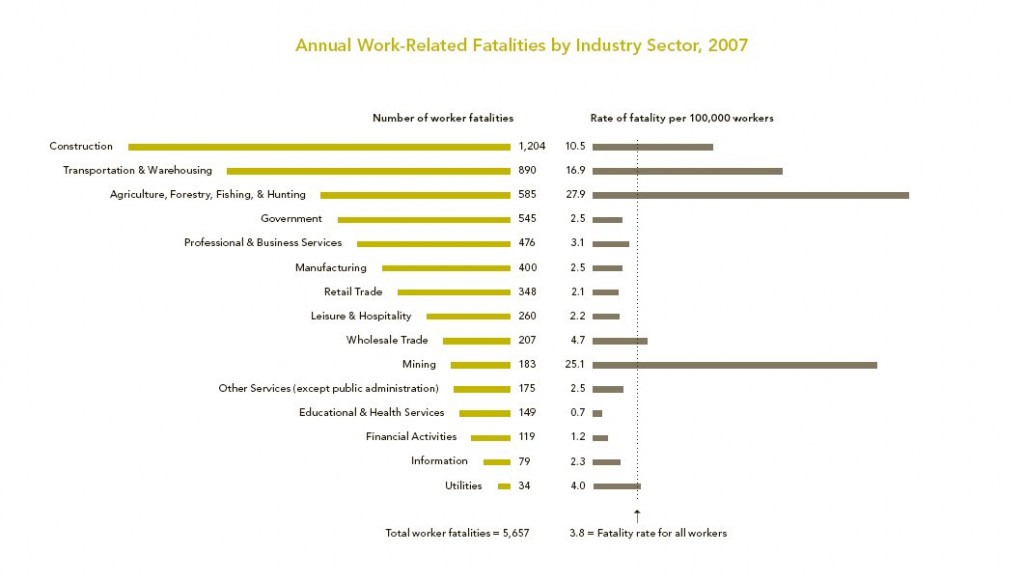 The entire NIOSH document can be found HERE
The entire NIOSH document can be found HERE
In 2008 more than 145 million people in the U.S. were employed in the civilian workforce. Every day, approximately 9,000 workers are injured on the job and 15 workers die from a fatal workplace injury. Work-related illness claims the lives of about another 135 workers and retirees daily. According to the Bureau of Labor Statistics (bls), 5,657 workers died from work-related injuries and more than 4 million nonfatal injuries and illnesses were reported in 2007. The economic impact of work-related injury and illness has been estimated to be $171 billion annually, the same as cancer or cardiovascular disease and much greater than the burden from hiv/aids or Alzheimer’s disease. In 2006 employers spent an estimated $87.6 billion on wage payments and medical care for workers hurt on the job.
Addressing workplace safety and health poses numerous challenges. First, the composition of the U.S. workforce is becoming increasingly diverse; it is becoming older, more racially and ethnically diverse, and more women are entering the workforce. These changes reflect the changing social and demographic characteristics of the country but also produce new safety and health issues. It has become clear that certain populations experience an increased burden of disease, disability, and death. These populations also frequently have less access to quality healthcare.
Moreover, U.S. workplaces are rapidly evolving, changing the way work is organized. Jobs in our economy continue to shift from manufacturing to services, with service-providing industries now employing about 80 percent of all workers. Longer hours, compressed work weeks, shift work, reduced job security, and part-time and temporary work are realities of the modern workplace and are increasingly affecting the health and well-being of workers and their families. In addition, new chemicals, materials, processes, and equipment with new potential occupational risks are being developed and marketed at an ever-accelerating pace.
The acute and long-term effects of work-related injury, illness, and death translate into tremendous economic and emotional costs to society. Data show that when interventions, such as safe work practices and engineering controls, are based on sound scientific research the burden of injury and illness is significantly reduced. Through its Research-to-Practice (r2p) initiative, niosh works closely with its partners to move research findings and technologies out of the Institute and into the workplace, and to promote the diffusion of products and information in an effort to protect workers and reduce cost to employers, workers, their families, and society as a whole.
